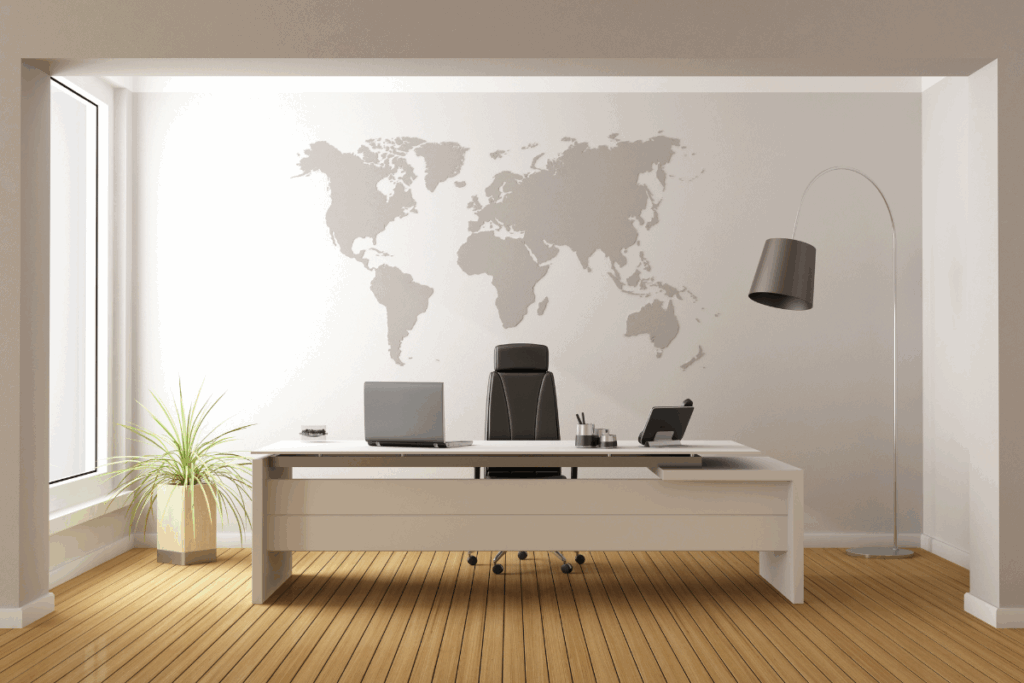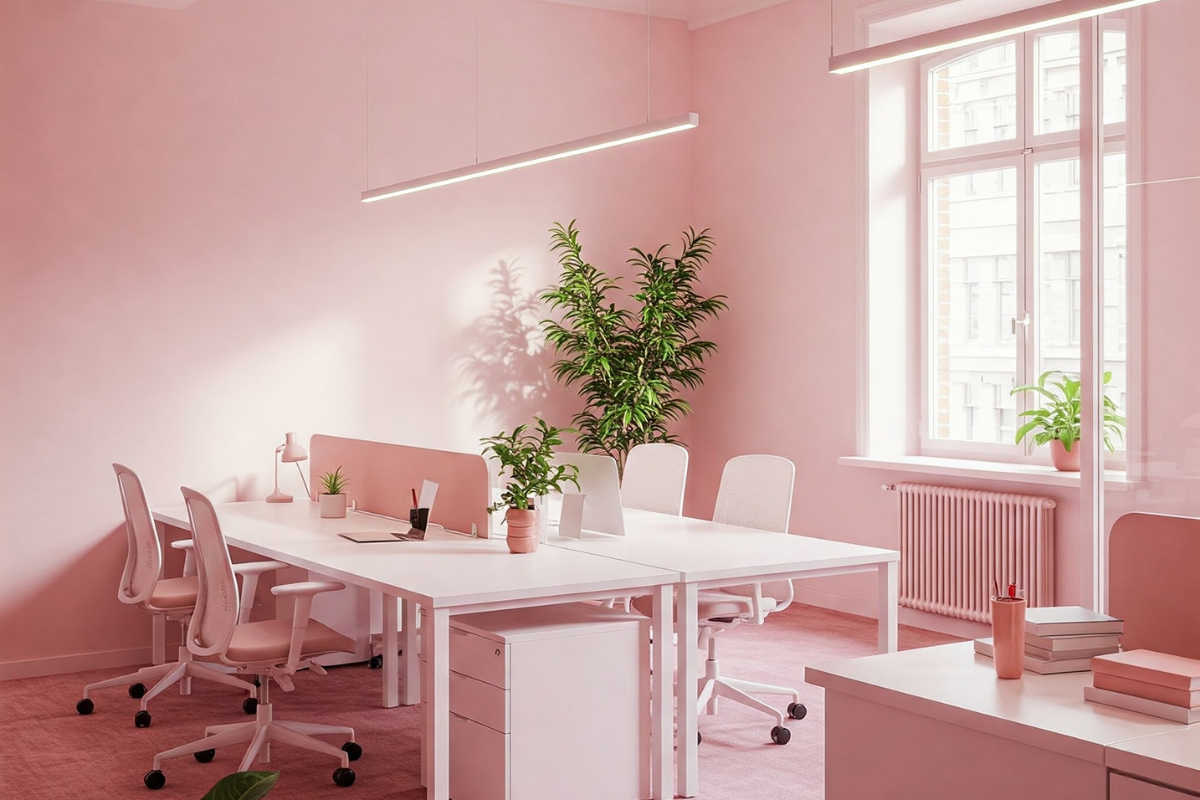In the hustle and bustle of Singapore’s corporate world, your office environment plays a bigger role than you might think. A thoughtfully designed space can energise your team and boost productivity—while a cluttered, chaotic one can quietly drain focus and morale. With limited square footage and the constant buzz of city life, it’s no surprise that minimalist design is catching on as a go-to approach for office interior design in Singapore.
Minimalism isn’t about creating cold, empty rooms. Instead, it’s about simplicity with purpose—stripping away the excess to highlight what truly matters. Think clean lines, calming colours, and smart, functional layouts. For businesses planning an office renovation in Singapore, embracing a minimalist style isn’t just a design choice—it’s a strategy for clarity, comfort, and efficiency.
In this article, we’ll explore how a minimalist office setup can transform your workplace. From enhancing productivity and reducing stress to making the most of your space, discover how the “less is more” philosophy can work beautifully in the context of modern Singaporean offices.
The “Why” Behind “Less is More”: Benefits of Minimalist Office Design
1. Enhanced Productivity and Focus
Numerous psychological studies have linked cluttered environments to reduced cognitive performance. A visually chaotic space can over-stimulate the brain, leading to mental fatigue and decreased concentration. In contrast, minimalist offices are deliberately structured to eliminate distractions—helping employees focus better and work more efficiently.
In Singapore, where long working hours are common, fostering sustained concentration is a competitive advantage. Clean desks, open layouts, and neatly stored materials create a mental atmosphere of order and purpose.
2. Reduced Stress and Improved Well-being
Workplace wellness is no longer a luxury—it’s a necessity. Minimalist environments, with their uncluttered design, soft tones, and calm visuals, help to lower stress levels and promote emotional well-being. In a city as high-pressure as Singapore, this effect is not just welcome—it’s vital.
By removing unnecessary visual noise and providing a space that promotes stillness, businesses can contribute to healthier, happier employees.
3. Optimised Space Utilisation
Singaporean offices are often limited in size, particularly in central business districts or co-working setups. Minimalism is tailor-made for these conditions. Clever storage, space-saving furniture, and open designs make small offices appear larger and more welcoming.
Minimalist layouts also encourage better movement flow, enhancing comfort in tight quarters—a major win for compact Singaporean workplaces.
4. Cost-Effectiveness (Long-Term)
Though minimalist design may seem sleek and expensive at first glance, it actually supports long-term savings. The approach promotes investing in fewer, but higher-quality and multi-functional pieces. This avoids the common pitfall of constantly replacing cheap, clutter-prone furniture.
Furthermore, by reducing the number of items purchased and favouring efficient spatial layouts, businesses can cut down on unnecessary expenditures—particularly valuable in Singapore’s high-cost commercial real estate landscape.
5. Professional Aesthetic
A minimalist workspace communicates sophistication and intent. Clean lines, cohesive colours, and a clutter-free environment reflect professionalism and efficiency. Clients visiting a minimalist Singaporean office are more likely to perceive the business as modern, reliable, and detail-oriented.
Core Principles & Practical Tips for a Minimalist Office in Singapore
Declutter, Declutter, Declutter
The first step in any minimalist transformation is a thorough decluttering session. Remove anything that doesn’t serve a clear function. Embrace the “one in, one out” rule—every new item added must replace an old one.
To combat paper pile-up, go digital wherever possible. In Singapore, where document digitisation is common in both public and private sectors, there’s little excuse to cling to bulky filing cabinets.
Strategic Colour Palette: The Power of Neutrals
A restrained colour palette is key. Whites, greys, beiges, and soft pastels form the foundation of a minimalist aesthetic. These shades not only create a calming environment but also visually expand the space—ideal for Singapore’s smaller offices.
Add subtle pops of colour through well-chosen artwork or an accent wall, but keep the palette cohesive. The goal is harmony, not stimulation.
Clean Lines & Functional Furniture
Choose furniture with simple silhouettes—no ornate carvings or clunky bulk. Multi-functional pieces are invaluable: think desks with integrated storage or modular shelving that can adapt to your team’s evolving needs.
Ergonomics should never be sacrificed for style. Invest in comfortable, well-designed chairs and desks to support posture and prevent strain.
Opt for furniture that appears to float or is slightly elevated off the floor. This visual lightness makes even small rooms feel more spacious—perfect for Singapore’s compact layouts.
Smart Storage Solutions: Out of Sight, Out of Mind
Good storage is invisible storage. Built-in cabinetry that matches the wall colour helps maintain the clean aesthetic. Tall, narrow storage units maximise vertical space—an essential in Singapore’s high-rise buildings.
Hidden compartments and clever cable management systems eliminate visual clutter. Nothing breaks the illusion of calm faster than tangled wires or piles of peripherals.
Maximising Natural Light & Thoughtful Lighting
Natural light improves mood, reduces eye strain, and enhances productivity. Arrange desks near windows and use reflective surfaces to bounce light around the room.
Sheer curtains or Venetian blinds allow daylight in while reducing glare—an important consideration in Singapore’s sunny climate. Avoid harsh overhead lighting and instead incorporate layered lighting: ambient (e.g., LED panels), task (e.g., desk lamps), and accent (e.g., pendant lights).
Incorporating Natural Elements (Biophilic Design)
Minimalism doesn’t mean lifeless. A few well-placed plants not only soften the look but also improve indoor air quality and morale. Choose low-maintenance varieties like snake plants, pothos, or peace lilies—well-suited to Singapore’s humidity.
Use natural materials such as light-toned wood or bamboo to bring warmth and texture without compromising the minimalist feel.
Embracing Empty Space
Negative space—or the space between objects—is an essential element of minimalist design. It creates visual balance and gives the eye room to rest. Resist the urge to fill every surface. A bare corner can be more powerful than one packed with décor.
Personalisation (with Restraint)
Minimalism isn’t about erasing personality. A few curated personal items—such as a piece of art, a photo frame, or a single sculpture—can add warmth without clutter. The key is selection. Every item should have meaning or utility.
Cost-Effective Approaches to Minimalist Office Design in Singapore
Minimalist design doesn’t require a huge upfront investment. Here are some tips for doing it smartly:
- Prioritise quality over quantity: A few solid, timeless pieces will outlast trends and heavy usage.
- Explore second-hand or refurbished furniture: Singapore has a growing market for pre-loved office furnishings, especially via platforms like Carousell or local B2B suppliers.
- DIY improvements: A coat of paint or updated cabinet handles can make a surprising difference.
- Phase your upgrades: You don’t need to redesign your entire office overnight. Start with one area—perhaps the meeting room or reception—and expand gradually.
- Favour open layouts: Reduce the need for cubicles or partition walls. This saves money and aligns naturally with minimalist principles.
Sustainable Minimalism: Designing for a Greener Future

Minimalism and sustainability go hand-in-hand. With fewer items and more deliberate purchases, there’s less waste generated over time.
Opt for furnishings made from recycled or sustainably sourced materials, and choose local suppliers to reduce your carbon footprint. Use energy-efficient lighting and appliances wherever possible—Singapore’s Green Mark certification system is a helpful guide.
Design for the long haul by selecting modular furniture and neutral colour schemes that won’t date quickly. Adaptable spaces future-proof your investment and reduce the need for frequent renovations.
Conclusion: The Lasting Impact of a Minimalist Workspace
Minimalist office design in Singapore isn’t just a trend—it’s a thoughtful response to the realities of urban working life. It offers tangible benefits: heightened productivity, improved mental well-being, cost savings, and a more professional brand image.
Remember, minimalism isn’t about creating cold, empty spaces—it’s about intentionality. Every item, colour, and layout choice serves a purpose. By embracing this ethos, Singaporean businesses can craft workspaces that are not only beautiful but also functional and enduring.
Ready to make the switch? Start small, stay intentional, and let your workspace breathe.


